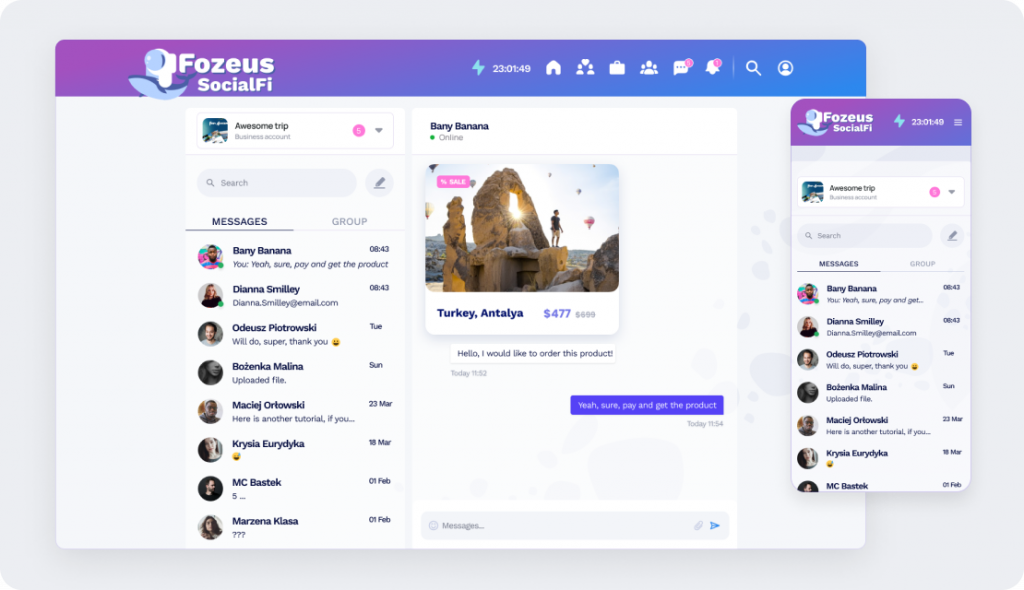
Chats with calls and group calls

If you’ve got a brilliant idea, we’re here to help you build an early product version and give it a shot in the market.
If you have an existing product and team, but looking to expand the capacity and try out a new concept, we’ve got you covered.
If you know what specific product you need to drive your industry market.
If you clearly know what technology can help your business achieve goals through the product.
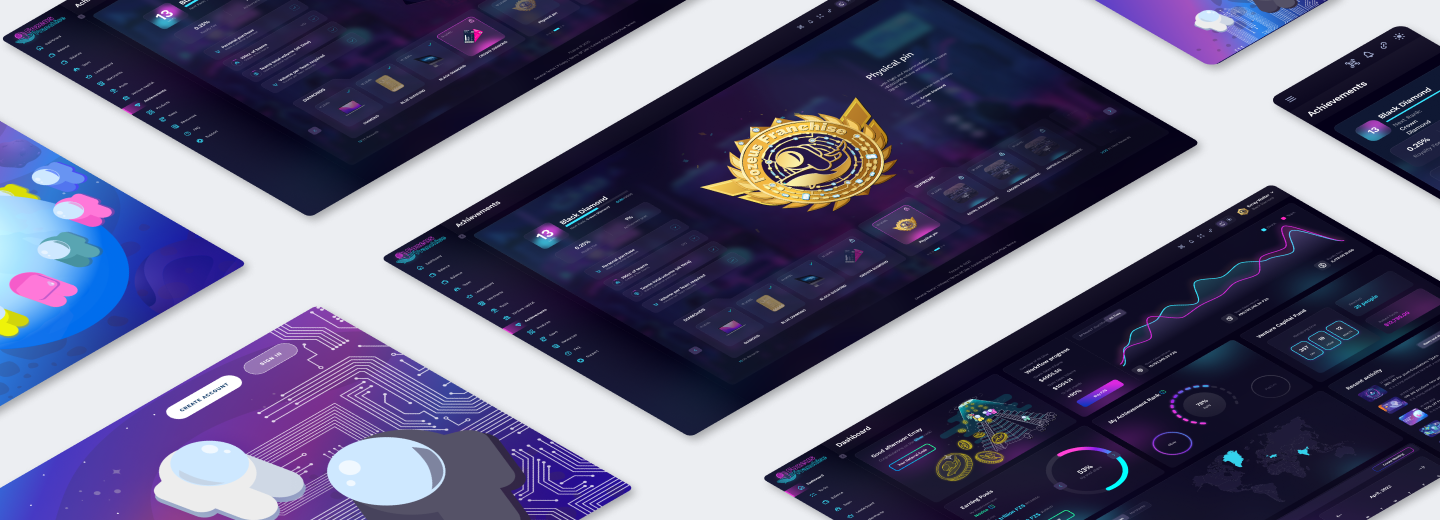
About the client
Fozeus is an innovative ecosystem that offers various digital products and services including a social media platform, games, an NFT marketplace, a crypto wallet, and more that work together using blockchain technology. By harnessing the power of its proprietary cryptocurrency, Fozeus Coin, Fozeus sets out to reshape the future of decentralized finance.
As they pursued their bold vision of creating a complete metaverse, the founders of Fozeus faced a problem: some of their solutions were outdated and required upgrading. They partnered with EVNE to revamp the SocialFi Media platform, a social network that facilitates interactions among individuals interested in the future of finance while enabling them to earn Fozeus Coin.

Inspired by the founders’ grand vision, we were eager to contribute our expertise and talent to this project. Taking into account the needs of the target audience, we offered solutions that went beyond engineering and encompassed design as well. We revamped Fozeus’s products using modern development approaches and technology that ensured smooth and unrestricted growth of the ecosystem. The product is constantly upscaling and attracting new users each day.
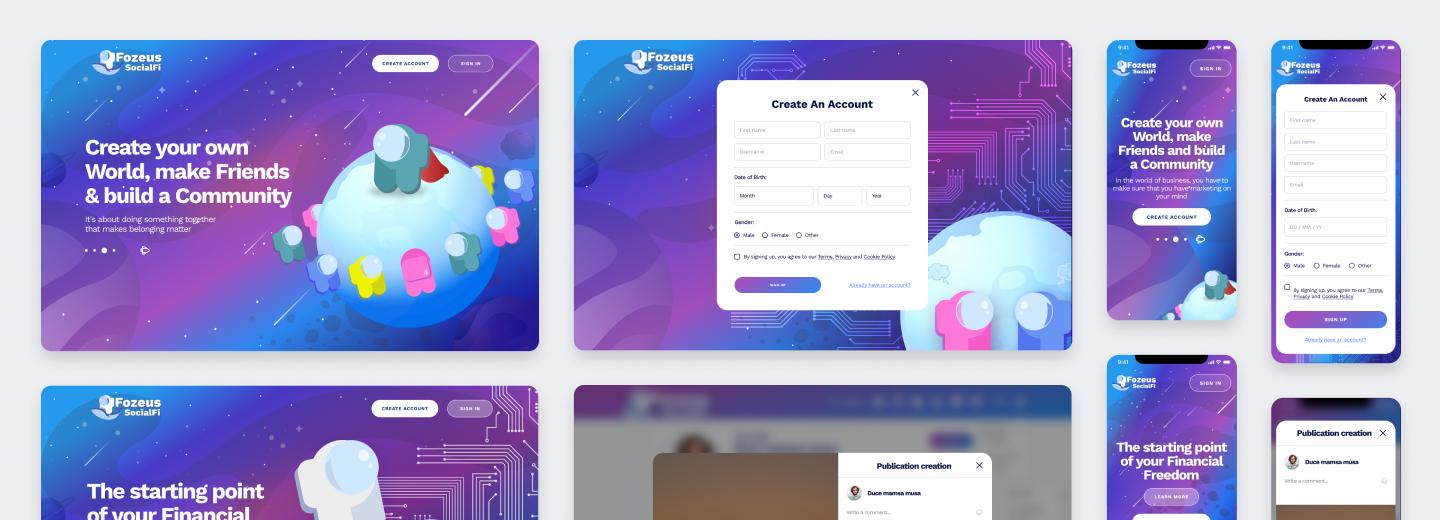
Considering that the platform’s target audience consisted of individuals aged 14 to 23, it was crucial to deliver an appealing, user-friendly, and distinctive interface. Also, mobile accessibility was important to serve people who use the social media platform on their phones.
Collaborating closely with the client’s design team, our approach involved the following steps: gathering client requirements, assessing their feasibility, and proposing cost-effective alternatives. For example, to expedite time to market and reduce costs, we made the decision to prioritize building a website over developing a mobile app.
We re-engineered the platform from scratch, working alongside the core team responsible for maintaining the old platform. Once the new platform was ready, we seamlessly transitioned to the updated version.
Our enhancements included the addition of numerous features, such as:
Our enhancements included the addition of numerous features, such as:

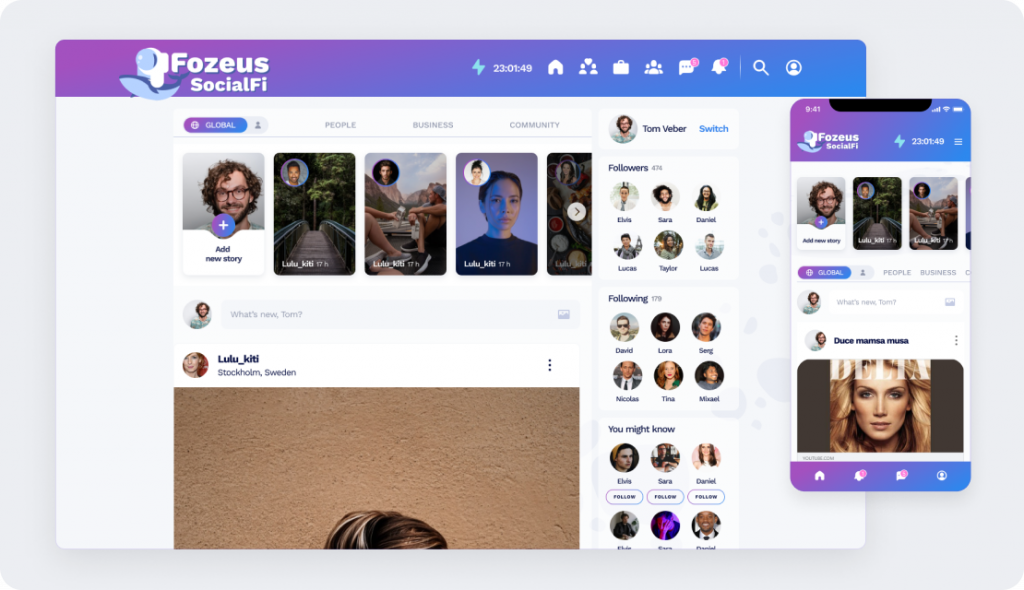
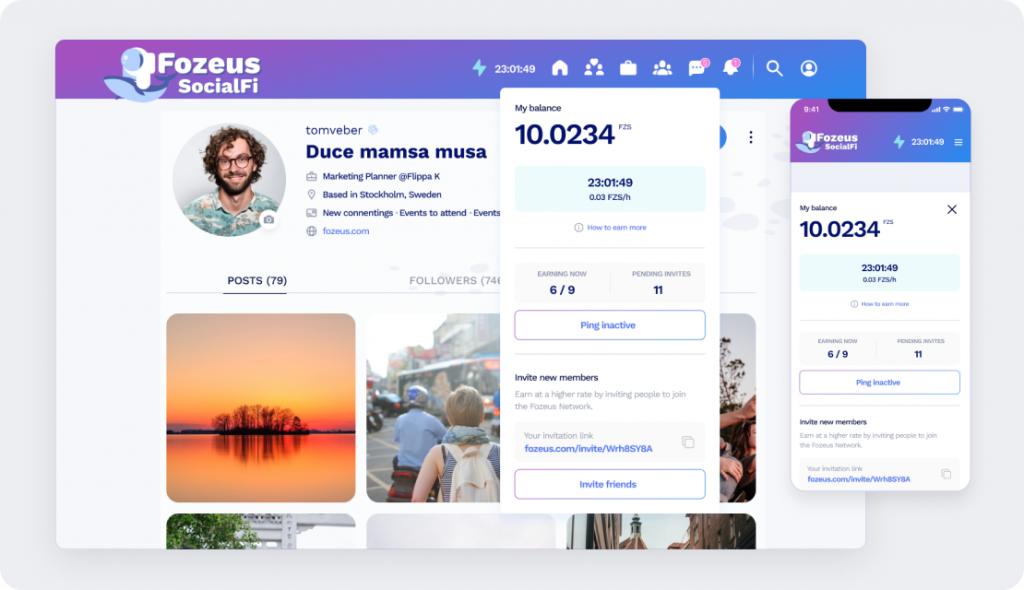

We also enhanced security measures, including improved security protocols and data encryption to safeguard sensitive information.
Before the redesign, the old platform was not actively promoted. But after we rebuilt it, the situation improved, and now it’s widely advertised. The social network has become a strong tool for marketing the whole ecosystem, showcasing new features and events to draw attention.
Our successful collaboration on revamping the social media platform not only earned the client’s trust but also opened doors to new opportunities. As a result, we were given the responsibility of rebuilding another platform within the Fozeus ecosystem.
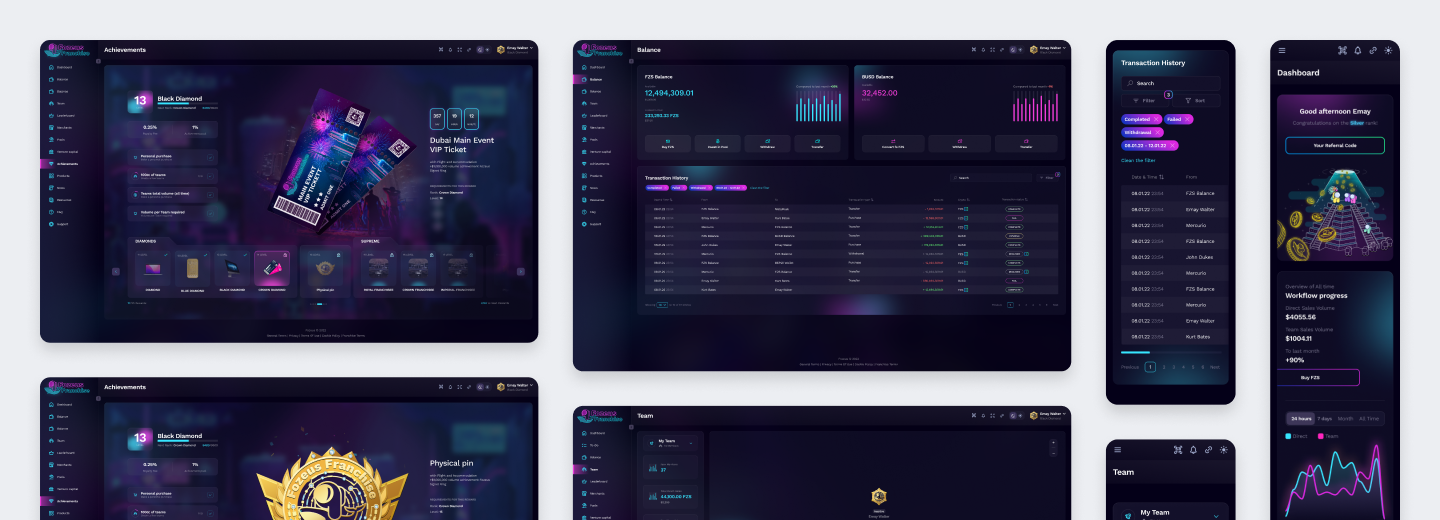
To address these problems, we reengineered the platform and added new modules. The key solutions implemented were:
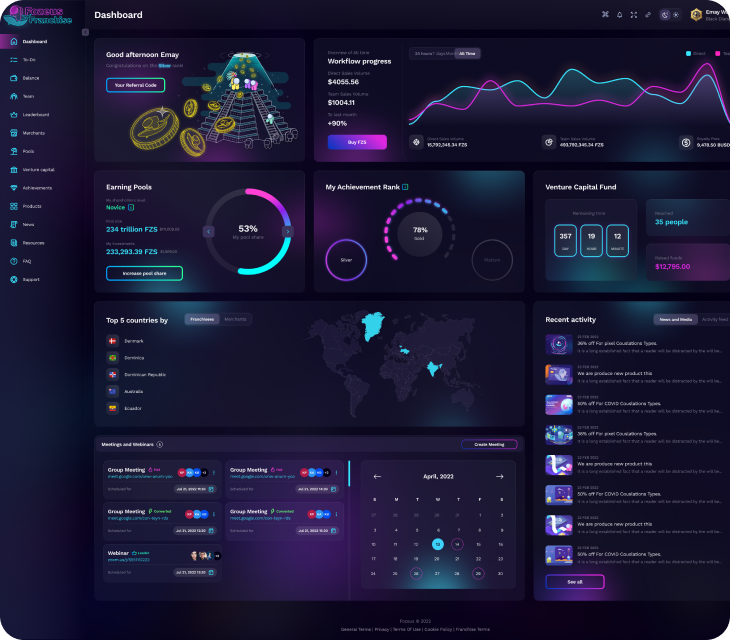
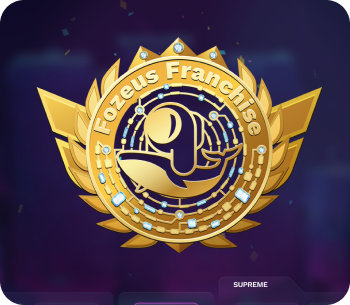
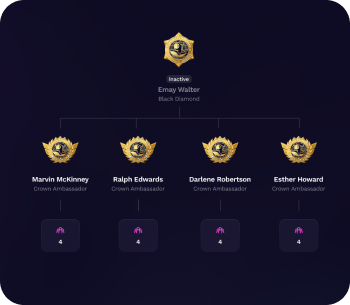
We implemented an attractive and user-friendly interface, incorporating features such as a map to display the number of users and merchants accepting Fozeus, team management tools for meeting planning, an information block with relevant articles, and comprehensive statistics and transaction history.
To ensure better performance, security, and scalability, we rebuilt the architecture of the platform. We chose React and TypeScript for the front end, providing reliability and scalability. For the backend, we opted for Django, leveraging its ability to handle large amounts of data quickly and its strong built-in security measures against common vulnerabilities like XSS (Cross-Site Scripting) attacks.
We integrated various tools to improve performance and maintain code quality, including Sonar for code quality checking, Sentry for monitoring server response time and error logging, and Storybook for isolating and testing individual components.
The platform operates with a complex mechanism that includes multiple tiers, similar to multi-level marketing (MLM). This structure consists of the top tier, followed by 19 tiers, or 20 levels in total. Each user has the potential to further recruit additional team members, forming their own downline.
One of the biggest challenges we faced during the project was testing. Specifically, we needed to simulate payments for users across all 20 levels. To accomplish this, we created 20 teams with multiple users in each team, deposited funds, and conducted testing. Without this process, it was impossible to identify certain bugs, such as a mistake in calculating the percentage for royalties, due to the complexity of the algorithm. We resolved the issue, ensuring the platform’s functionality was accurate and reliable.
We also implemented unit testing for the backend to ensure the stability and reliability of the core functionality, enabling ongoing product development without the fear of regression bugs.
We successfully integrated three payment systems, providing users with the ability to buy cryptocurrencies seamlessly within the platform.
By implementing these solutions, we were able to address the performance, security, and scalability issues, while also enhancing the overall user experience and expanding the platform’s functionality.
The collaboration between EVNE and Fozeus yielded significant results in transforming the social media platform and rebuilding the Fozeus Franchise. The redesigned platforms are now positioned to support the ambitious vision of Fozeus and contribute to the future of decentralized finance. The key value delivered includes:
More advanced features
The redesigned platform addressed the limitations of the previous version, offering essential features like chats, stories, and various types of profiles.
Appealing UI
The platform now caters to the expectations of the target audience, providing an attractive, user-friendly, and unique interface.
An efficient marketing tool
The updated social app is now actively promoted and used as a marketing tool for the entire Fozeus ecosystem, effectively showcasing new features and events.
A quality product
The Fozeus Franchise was completely reengineered to offer a comprehensive tool for making money through cryptocurrency staking.
Ready for growth
The platform’s initial limitations were addressed through design improvements, technology stack enhancements, and code quality tools.
EVNE Developers is a strong software development team with a product mindset and a track record of successfully scaling minimum viable products (MVPs) into robust and scalable solutions.


